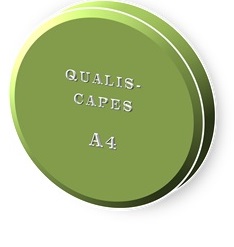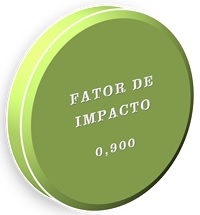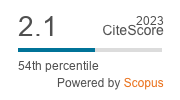Biofertilizer enriched with Paenibacillus polymyxa and Trichoderma sp. for radish cultivation
DOI:
https://doi.org/10.1590/1983-21252025v3813759rcKeywords:
Biofertilizer. Microorganisms efficient. Sustainable agriculture. Microbial inoculation. Raphanus sativus L..Abstract
Agricultural residues can be transformed into organic fertilizers through the inoculation of efficient microorganisms, which influence plant growth, disease and pest resistance, and stimulate physiological activities. The primary objective of this study was to develop a biofertilizer from agricultural residues using anaerobic fermentation, inoculated with Paenibacillus polymyxa and Trichoderma sp., for cultivating three radish cultivars (Raphanus sativus L.): Scarlet Champion, Crimson Giant, and Reggae. The experiment followed a completely randomized block design (CRBD) with 12 treatments and five replications, totaling 60 experimental units. The inoculation mixture consisted of 10% biofertilizer, 89.65% irrigation water, and 0.35% of either P. polymyxa or Trichoderma sp. Fertilization was applied to the soil at 7, 12, and 17 days after planting. The three radish cultivars exhibited higher survival rates, plant height, bulb diameter, foliage weight, and bulb weight when treated with the biofertilizer enriched with P. polymyxa, which influenced their morphological traits. This approach enables farmers to reduce chemical fertilizer use, lower economic costs, and develop new environmentally friendly biotechnological products. The biofertilizer enriched with P. polymyxa significantly enhanced plant morphology in all three radish cultivars. Crimson Giant achieved a 100% survival rate during fertilization, with a plant height of 26.49 cm at 32 days, a bulb diameter of 4.78 cm, a foliage weight of 0.81 kg, and a bulb weight of 46.00 g.
Downloads
References
ABOYEJI, C. M. et al. Growth, yield and vitamin C content of radish (Raphanus sativus L.) as affected by green biomass of Parkia biglobosa and Tithonia diversifolia. Agroforestry Systems, 93: 803-812, 2019.
AL-HUQAIL, A. A. et al. Sustainable Valorization of Four Types of Fruit Peel Waste for Biogas Recovery and Use of Digestate for Radish (Raphanus sativus L. cv. Pusa Himani) Cultivation. Sustainability, 14: 10224, 2022.
BADAGLIACCA, G. et al. Effect of Solid Digestate Amendment on The Dynamics of N Soluble Forms in Two Contrasting Soil Profiles under Mediterranean Environment. Agriculture, 13: 1311, 2023.
BALBANDE, V. et al. Effect of integrated nutrient management on growth, yield and quality of radish (Raphanus sativus L.) cv MAHY 22. The Pharma Innovation Journal, 12: 1103-1107, 2023.
BEYKKHORMIZI, A. et al. Effect of vermicompost on some morphological, physiological and biochemical traits of bean (Phaseolus vulgaris L.) under salinity stress. Journal of Plant Nutrition, 39: 883-893, 2016.
BULIGON, E. L. et al. Fertilizer Performance of a Digestate from Swine Wastewater as Synthetic Nitrogen Substitute in Maize Cultivation: Physiological Growth and Yield Responses. Agriculture, 13: 565, 2023.
CHONTAL, M. A. H. et al. Nutrient content of fermented fertilizers and its efficacy in combination with hydrogel in Zea mays L. International Journal of Recycling of Organic Waste in Agriculture, 8: 309-315, 2019.
DAUD, N. et al. Paenibacillus polymyxa bioactive compounds for agricultural and biotechnological applications. Biocatalysis and Agricultural Biotechnology, 18: 101092, 2019.
ETESAMI, H; JEONG, B.R; GLICK, B. Potential use of Bacillus spp. as an effective biostimulant against abiotic stresses in crops - A review. Current Research in Biotechnology, 5: 100128, 2023.
GALIC, M; BILANDZIJA, D; ZGORELEC, Z. Influence of Long-Term Soil Management Practices on Carbon Emissions from Corn (Zea mays L.) Production in Northeast Croatia. Agronomy, 13: 2051, 2023.
GARCIA, T. et al. Combined effect of biochar and fertilizers on Andean Highland soils before and after cropping. Sustainability, 14: 8912, 2022.
LAMOLINARA, B. et al. Anaerobic digestate management, environmental impacts, and techno-economic challenges. Waste Management, 140: 14-30, 2022.
LANGENDRIES, S; GOORMACHTIG, S. Paenibacillus polymyxa, a Jack of all trades’, Environmental Microbiology, 23: 5659-5669, 2021.
LI, X. et al. Characterization of Antagonistic Bacteria Paenibacillus polymyxa ZYPP18 and the Effects on Plant Growth. Plants, 12: 2504, 2023.
MANZAR, N. et al. Trichoderma: Advent of Versatile Biocontrol Agent, Its Secrets and Insights into Mechanism of Biocontrol Potential. Sustainability, 14: 12786, 2022.
MOLINA, S. C; MATILLA, M. A. Chemical fertilization: a short-term solution for plant productivity. Microbial Biotechnology, 13: 1311-1313, 2020.
OLIVEIRA NETO, H. T. et al. Growth, gas exchanges and production of beet CV. katrina under organo-mineral fertilization. Bioscience Journal, 33: 1126-1133, 2017.
OMER, R.M. et al. Chemical, Anatomical, and Productivity Responses of Cowpea (Vigna unguiculata L.) to Integrated Biofertilizer Applications with PGPR, Cyanobacteria, and Yeast. Sustainability, 15: 7599, 2023.
ORTIZ, N. et al. Improved Organic Fertilisers Made from Combinations of Compost, Biochar, and Anaerobic Digestate: Evaluation of Maize Growth and Soil Metrics. Agriculture, 13: 1557, 2023.
PII, Y. et al. Microbial interactions in the rhizosphere: beneficial influences of plant growth-promoting rhizobacteria on nutrient acquisition process. A review. Biology and Fertility of Soils, 51: 403-415, 2015.
PRADO, J. et al. Assessment of the Agronomic Value of Manure-Based Fertilizers. Agronomy, 13: 140, 2023.
RAN, J. et al. Paenibacillus polymyxa Antagonism towards Fusarium: Identification and Optimisation of Antibiotic Production. Toxins, 15: 138, 2023.
SAMORAJ, M. et al. The challenges and perspectives for anaerobic digestion of animal waste and fertilizer application of the digestate. Chemosphere, 295: 133799, 2022.
SOLOMOU, N. et al. The Design and Performance Prediction Model of an Integrated Scheme of a Membrane Bioreactor and Anaerobic Digester for the Treatment of Domestic Wastewater and Biowaste. Sustainability, 15: 11455, 2023.
SUHANI, I. et al. Effect of Compost and Vermicompost Amendments on Biochemical and Physiological Responses of Lady’s Finger (Abelmoschus esculentus L.) Grown under Different Salinity Gradients. Sustainability, 15: 11590, 2023.
VELECELA, S. et al. Microbial enrichment vermicompost under two production system and its effects on radish (Raphanus sativus L.) production. Scientia Agropecuaria, 10: 229-239, 2019.
WEI, X. et al. Enhancing Soil Health and Plant Growth through Microbial Fertilizers: Mechanisms, Benefits, and Sustainable Agricultural Practices. Agronomy, 14: 609, 2024.
ZHENG, W. et al. Comparative Evaluation of Microbially-Produced Biostimulants on Peanut Growth. Sustainability, 15: 8025, 2023.
Downloads
Published
Issue
Section
License
Os Autores que publicam na Revista Caatinga concordam com os seguintes termos:
a) Os Autores mantêm os direitos autorais e concedem à revista o direito de primeira publicação, com o trabalho simultaneamente licenciado sob a Licença Creative Commons do tipo atribuição CC-BY, para todo o conteúdo do periódico, exceto onde estiver identificado, que permite o compartilhamento do trabalho com reconhecimento da autoria e publicação inicial nesta revista, sem fins comerciais.
b) Os Autores têm autorização para distribuição não-exclusiva da versão do trabalho publicada nesta revista (ex.: publicar em repositório institucional ou como capítulo de livro), com reconhecimento de autoria e publicação inicial nesta revista.
c) Os Autores têm permissão e são estimulados a publicar e distribuir seu trabalho online (ex.: em repositórios institucionais ou na sua página pessoal) a qualquer ponto antes ou durante o processo editorial, já que isso pode gerar alterações produtivas, bem como aumentar o impacto e a citação do trabalho publicado (Veja O Efeito do Acesso Livre).







